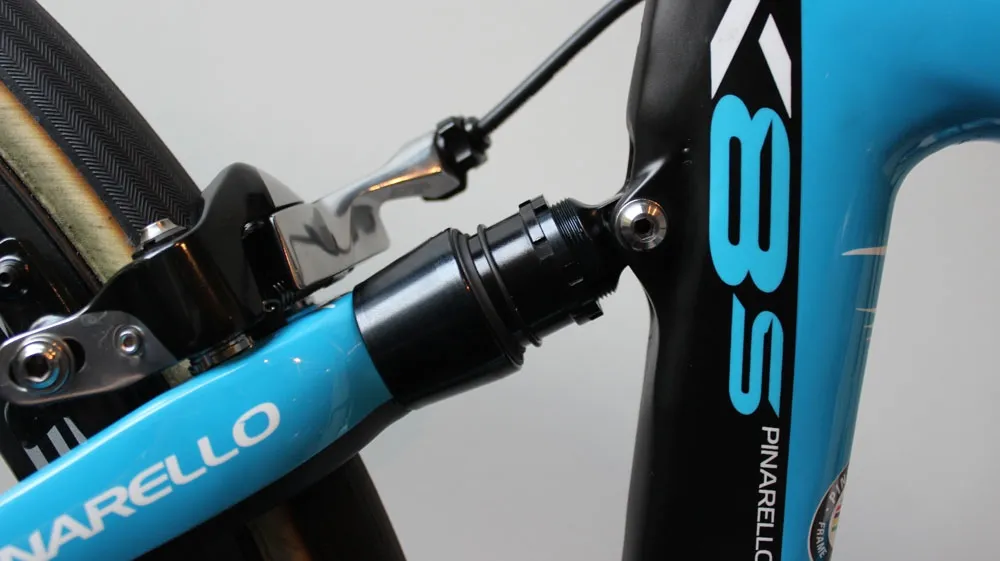Gravel and adventure road bikes are changing quickly. Over the last couple of years we’ve seen wheelbases grow, head angles slacken, and thru-axles become the norm.
Braking has moved away from the rims while wider, tubeless-ready wheels and tyres are now common. We’ve even seen dropper posts skip across to road bikes. But it’s the suspension on these bikes — or rather the lack of it — that I find truly interesting.
- Fox AX Adventure Cross fork spotted
- Why the next-gen adventure road bike is a mountain bike in disguise
Fox shocked me, along with many others, earlier this month when its freaky-looking AX Adventure Cross prototype fork appeared on a gravel bike at NAHBS. Made from a mashup of existing components and offering just 40mm of travel means its proportions are all wrong — yet I think this fork deserves a lot of credit.
You see, the AX fork marks the first time that a mainstream manufacturer has thought seriously about suspension on a road bike for a long time. Cannondale too deserves a mention for the 30mm of fully adjustable, properly damped Lefty Oliver fork that it used on its more expensive Slate models.

Current endurance bike designs don't count
I’m going to have to exclude designs like Trek’s IsoSpeed and the cartridge front suspension on the front of the new Roubaix. As impressive as these systems are, I genuinely believe they can be no substitute for conventional adjustable dampers and put most of their function down to making a rider more comfortable. I’d say the same about Lauf’s leaf-sprung Grit fork, too.
Pinarello seemed to get halfway there with its K8-S frames. Developed in conjunction with Jaguar in order to take on Paris-Roubaix, the K8-S sandwiched an elastomer-based shock between its seatstays and seat tube. Unlike many similar designs to previously launch at Paris-Roubaix, the K8-S went into production — although its sky-high retail price means very few have ever swung a leg over one.

Imagine for a second then that a bike manufacturer put their time into designing a short travel full-suspension road bike for gravel duties. One with properly thought out damping that would aid grip rather than just improve ride comfort. Like all good ideas it has of course already been done.
Take a look back to the ill-fated full-suspension designs Bianchi entered into Paris-Roubaix in the 1990s. Rather than crude elastomers wedged between bending metal, the Bianchi bikes used a proper single-pivot, linkage-driven rear end complete with a coil shock.
Up front these bikes also delivered 30mm of air-sprung, oil-damped suspension in the form of the RockShox Paris-Roubaix SL fork.
Wait, what about weight?
Right now Scott can sell you its Spark RC900 full-suspension cross-country frame weighing just 1,779g, including its shock. It offers 4in (100mm) of suspension travel and has been ridden to gold medals on some of the roughest courses around. Surely then, it must be possible to create a sub-1,500g full-suspension road frame? Something with a couple of inches of firm but effective suspension.
With gravel bikes rapidly catching up with the tech specs of mountain bikes, it seems to me that dedicated suspension will be the next big change. I for one am looking forward to reaping the benefits.
What do you reckon? Do shock absorbers have a place on certain road bikes? Let us know in the comments below.
Update: In a bizarre coincidence, hours after this article was posted, look what we spotted at the Taipei Cycle Show.
